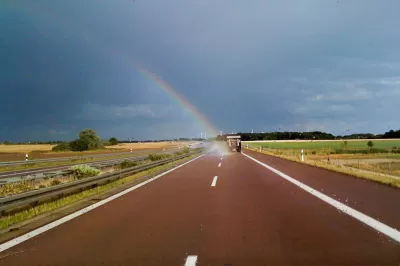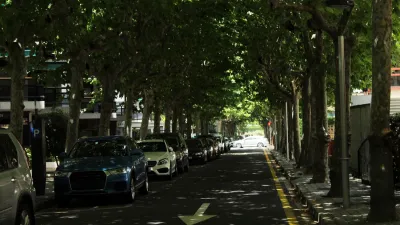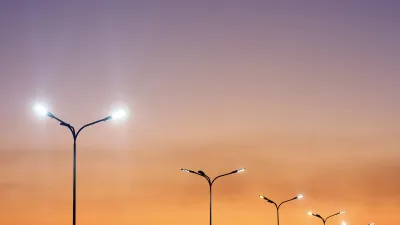As more municipalities are shutting off lights for energy savings, technological innovations are leading the way in new lighting and paving systems to make up for these economic and environmental constraints.

As Jon Scott of Woodhouse discussed in a recent post, many new paving methods equipped with smart technologies are popping up throughout the world. One called George Washington University’s Solar Walk, opened in autumn of 2013 and "features solar panels incorporated into an overhead trellis, and 27 slip-resistant, semi-transparent walkable tiles. The tiles contain photovoltaic technology to convert sunlight into electricity, which in turn powers the 450 LEDs that dot their borders. Combined, the tiles have an average peak capacity of 400W." While most people think of pathways as only having one use (i.e., enhancing pedestrian mobility), the Solar Walk is also a power source and a light source.
Another innovation Scott discusses is the paving of paths with "special minerals that absorb UV light during the day, and emit a soft glow during hours of darkness." According to the manufacturers of these paths, "the luminosity of the pathway adjusts to compensate for the atmospheric light levels – brighter on pitch black nights, and dimmer on lighter evenings. The ‘Starpath’ is a treatment that can be directly applied to an existing surface without the need to take up the original path and re-lay it.... In a time when local authorities are reducing electricity consumption to save money, a new surface that acts as a light source and can be applied in a matter of hours seems like a very attractive option."
Scott also discusses Idaho-based Solar Roadways's project of paving tarmacked surfaces with solar panels, also previously reported on Planetizen. Scott lauds how this innovation for turning "previously unproductive landmass into a renewable energy powerhouse. The solar energy collected by the smart surface could be used to feed the grid during the day time, or even power things such as heating elements under the surface to clear ice and snow from the roads in the winter. Eventually, it might be possible to power electric cars as they drive along. This would be a huge development for electric vehicles, because with current road surfaces and charging systems, they have a limited range that precludes long-distance journeys."
FULL STORY: Can solar roadways and glow-in-the dark footpaths be the future of the road safety?

Planetizen Federal Action Tracker
A weekly monitor of how Trump’s orders and actions are impacting planners and planning in America.

Congressman Proposes Bill to Rename DC Metro “Trump Train”
The Make Autorail Great Again Act would withhold federal funding to the system until the Washington Metropolitan Area Transit Authority (WMATA), rebrands as the Washington Metropolitan Authority for Greater Access (WMAGA).

The Simple Legislative Tool Transforming Vacant Downtowns
In California, Michigan and Georgia, an easy win is bringing dollars — and delight — back to city centers.

In These Cities, Most New Housing is Under 441 Square Feet
With loosened restrictions on “micro-housing,” tiny units now make up as much as 66% of newly constructed housing.

Albuquerque’s Microtransit: A Planner’s Answer to Food Access Gaps
New microtransit vans in Albuquerque aim to close food access gaps by linking low-income areas to grocery stores, cutting travel times by 30 percent and offering planners a scalable model for equity-focused transit.

This City Will Pay You to Meet Your Neighbors
A North Kansas City grant program offers up to $400 for residents to throw neighborhood block parties.
Urban Design for Planners 1: Software Tools
This six-course series explores essential urban design concepts using open source software and equips planners with the tools they need to participate fully in the urban design process.
Planning for Universal Design
Learn the tools for implementing Universal Design in planning regulations.
Smith Gee Studio
City of Charlotte
City of Camden Redevelopment Agency
City of Astoria
Transportation Research & Education Center (TREC) at Portland State University
US High Speed Rail Association
City of Camden Redevelopment Agency
Municipality of Princeton (NJ)





























